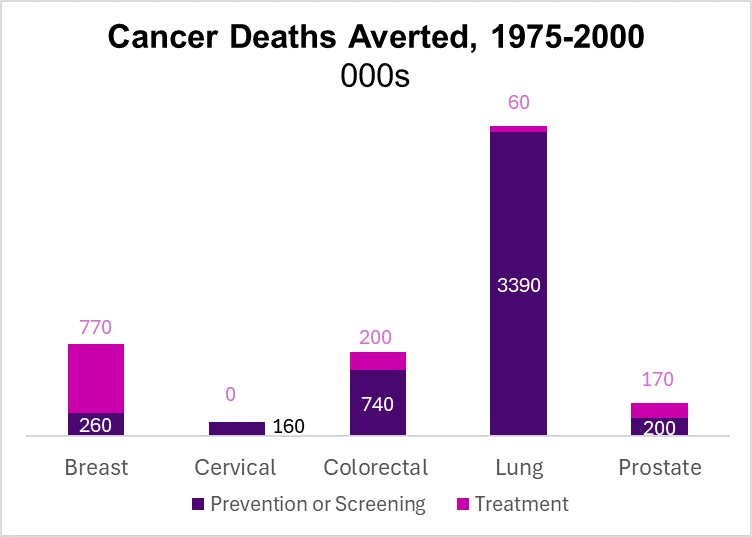Screening and prevention of five types of cancer saved 4.5 million lives from 1975-2000
December 18, 2024
Summary: Decreases in smoking, more screening, and better treatment all decreased the death toll from cancer.
Source: Goddard, et al JAMA Oncology December 5, 2024.
Researchers from the National Institutes of Health created a model to estimate the impact of prevention, screening and treatment on deaths from cancer in the U.S. between 1975 and 2000. They found that almost six million cancer deaths were prevented, and prevention and screening accounted for about eight in ten of the averted deaths. Note that decrease in cigarette smoking alone was responsible for over half (57%) of the deaths prevented. The United States Preventive Services Task Force (USPSTF) this week gave a preliminary grade of “A” to patient-collected cervical swabs – see brief note on this tomorrow.
Implications for employers:
Decrease in smoking rate has led to most of the lives saved in the quarter century that the researchers studied. This demonstrates the importance of employer support of public health initiatives like smoking cessation.
Cancer screening played a smaller role than improved therapy in preventing breast cancer deaths. Mammography and breast cancer detection are important, but many lives are saved through better (and more expensive) medical care.
One of these five cancers is now preventable in most instances by HPV vaccination of early adolescents. Employers can remind their employees that this and other vaccines are covered without cost sharing.
Thanks for reading. You can find previous posts in the Employer Coverage archive
Please subscribe, “like” and suggest this newsletter to friends and colleagues. Thanks!
Tomorrow: Shorts including US life expectancy, underinsurance, premiums, new option for cervical cancer screening, and health policy issues facing the outgoing Congress.

